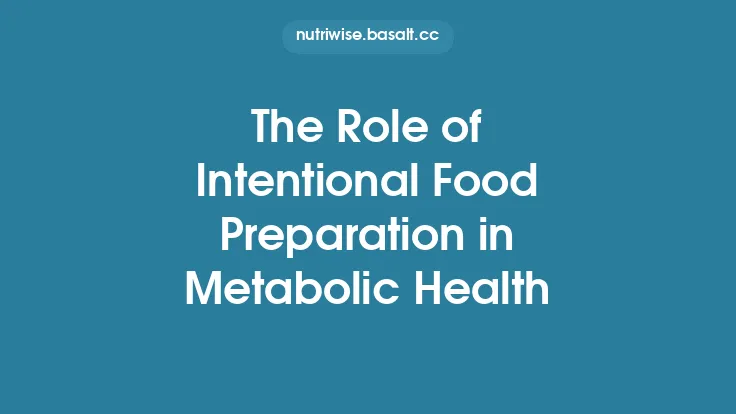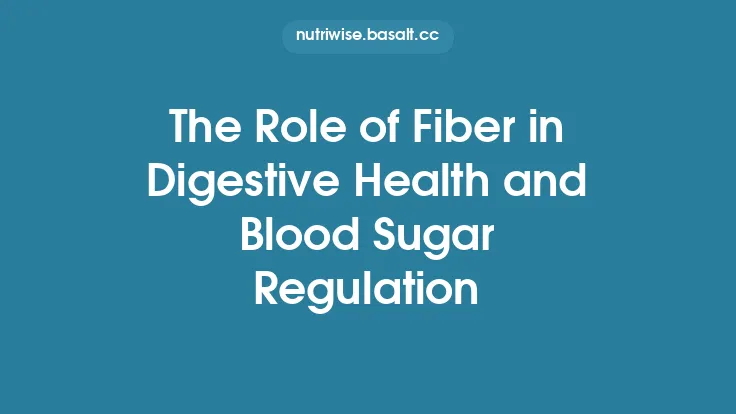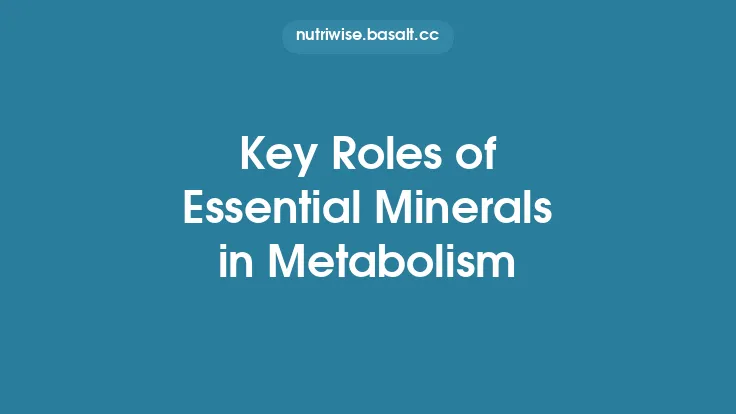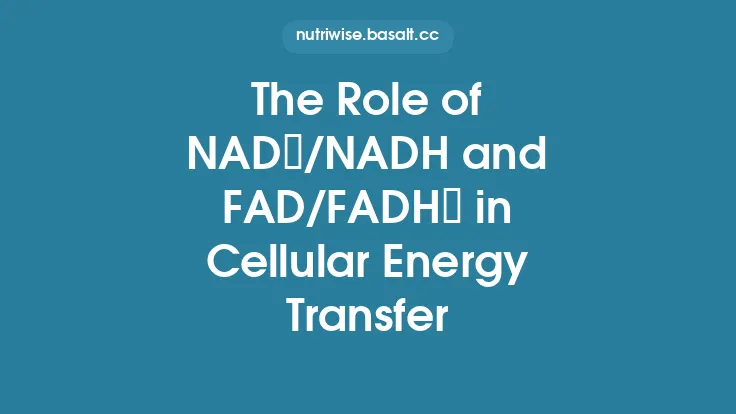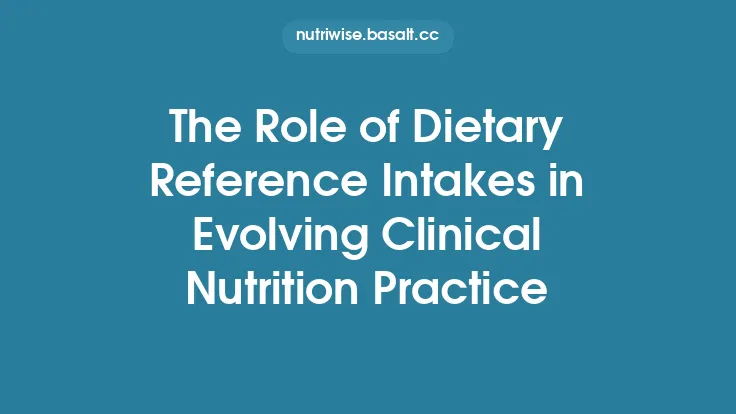Macronutrient metabolism does not occur in a vacuum; it is orchestrated by a sophisticated network of hormones that sense nutrient availability, energy status, and physiological demands. These chemical messengers fine‑tune the uptake, storage, mobilization, and utilization of carbohydrates, fats, and proteins, ensuring that cells receive the right fuel at the right time. Understanding how each hormone influences the metabolic fate of the three macronutrients provides a foundation for interpreting normal physiology, identifying metabolic disorders, and designing nutrition‑based interventions that work with the body’s innate regulatory systems.
Key Hormonal Players
| Hormone | Primary Source | Main Metabolic Targets | General Effect on Macronutrients |
|---|---|---|---|
| Insulin | β‑cells of pancreatic islets | Liver, muscle, adipose tissue | Promotes glucose uptake, glycogen synthesis, lipogenesis, and protein synthesis; suppresses lipolysis and gluconeogenesis |
| Glucagon | α‑cells of pancreatic islets | Liver | Stimulates glycogenolysis, gluconeogenesis, and hepatic fatty‑acid oxidation |
| Catecholamines (Epinephrine, Norepinephrine) | Adrenal medulla | Liver, muscle, adipose tissue | Rapidly increase glycogenolysis, lipolysis, and proteolysis; inhibit insulin secretion |
| Cortisol | Zona fasciculata of adrenal cortex | Liver, muscle, adipose tissue | Enhances gluconeogenesis, proteolysis, and lipolysis; antagonizes insulin action |
| Growth Hormone (GH) & IGF‑1 | Anterior pituitary (GH) → liver (IGF‑1) | Liver, muscle, adipose tissue | Promotes lipolysis, protein synthesis, and reduces peripheral glucose uptake |
| Thyroid Hormones (T₃, T₄) | Thyroid gland | Nearly all tissues | Increases basal metabolic rate, stimulates carbohydrate oxidation, and enhances lipolysis |
| Sex Steroids (Estrogen, Testosterone) | Gonads, adrenal cortex | Muscle, adipose tissue, liver | Modulate lipolysis, protein synthesis, and distribution of body fat |
| Incretins (GLP‑1, GIP) | Intestinal L‑cells (GLP‑1) & K‑cells (GIP) | Pancreas, brain, gut | Amplify insulin secretion, slow gastric emptying, and influence appetite |
These hormones rarely act in isolation; their effects are integrated through feedback loops, receptor cross‑talk, and downstream signaling cascades that converge on key metabolic enzymes.
Insulin: The Central Regulator of Carbohydrate and Lipid Metabolism
Insulin is the most potent anabolic hormone in the post‑prandial state. Binding to the insulin receptor (IR) triggers autophosphorylation of the receptor’s tyrosine residues, which recruits insulin receptor substrates (IRS‑1/2). The IRS proteins activate phosphoinositide 3‑kinase (PI3K), leading to the generation of phosphatidylinositol‑3,4,5‑trisphosphate (PIP₃) and subsequent activation of Akt (protein kinase B). Akt orchestrates a cascade of downstream events:
- Glucose Uptake: Akt phosphorylates and translocates GLUT4 transporters to the plasma membrane of skeletal muscle and adipocytes, dramatically increasing glucose influx.
- Glycogen Synthesis: Akt phosphorylates and inactivates glycogen synthase kinase‑3 (GSK‑3), relieving inhibition of glycogen synthase and promoting glycogen storage in liver and muscle.
- Lipogenesis: Akt stimulates sterol regulatory element‑binding protein‑1c (SREBP‑1c) transcription, up‑regulating fatty‑acid synthase (FAS) and acetyl‑CoA carboxylase (ACC). Simultaneously, insulin dephosphorylates and activates ACC, increasing malonyl‑CoA, which inhibits carnitine palmitoyltransferase‑1 (CPT‑1) and thus blocks fatty‑acid oxidation.
- Protein Synthesis: Akt activates the mammalian target of rapamycin complex 1 (mTORC1), which phosphorylates S6 kinase and 4E‑BP1, enhancing translation initiation and elongation. Concurrently, insulin suppresses the ubiquitin‑proteasome pathway, reducing protein breakdown.
Through these mechanisms, insulin channels excess glucose into storage forms (glycogen, triglycerides) and supports the synthesis of structural and functional proteins.
Glucagon and Counter‑Regulatory Hormones
When blood glucose falls, glucagon rises to preserve euglycemia. Glucagon binds to a G‑protein‑coupled receptor (GPCR) that activates adenylate cyclase, raising intracellular cyclic AMP (cAMP). cAMP activates protein kinase A (PKA), which phosphorylates key enzymes:
- Glycogenolysis: PKA phosphorylates phosphorylase kinase, which in turn activates glycogen phosphorylase, cleaving glycogen to glucose‑1‑phosphate.
- Gluconeogenesis: PKA phosphorylates and activates transcription factors (e.g., CREB) that increase expression of phosphoenolpyruvate carboxykinase (PEPCK) and glucose‑6‑phosphatase, driving hepatic glucose production.
- Lipolysis: In adipocytes, PKA phosphorylates hormone‑sensitive lipase (HSL) and perilipin, liberating free fatty acids (FFAs) for hepatic β‑oxidation and subsequent gluconeogenesis (glycerol backbone).
Glucagon’s actions are complemented by other counter‑regulatory hormones—epinephrine, cortisol, and growth hormone—each reinforcing glucose output and mobilizing energy stores during fasting or stress.
Catecholamines: Epinephrine and Norepinephrine in Acute Metabolic Shifts
Catecholamines are released from the adrenal medulla (epinephrine) and sympathetic nerve endings (norepinephrine) in response to physical activity, hypoglycemia, or acute stress. Their β‑adrenergic receptors couple to Gs proteins, mirroring glucagon’s cAMP‑PKA pathway, while α‑adrenergic receptors couple to Gq proteins, activating phospholipase C (PLC) and generating diacylglycerol (DAG) and inositol trisphosphate (IP₃). The net metabolic outcomes include:
- Rapid Glycogenolysis: β‑adrenergic stimulation of muscle glycogen phosphorylase provides immediate glucose for ATP generation.
- Enhanced Lipolysis: HSL activation in adipose tissue releases FFAs, which are oxidized in muscle and liver to meet heightened energy demands.
- Proteolysis: Catecholamines increase muscle protein breakdown, supplying amino acids for gluconeogenesis when carbohydrate reserves are low.
These effects are transient, designed to meet short‑term energy spikes, and are quickly attenuated once catecholamine levels decline.
Cortisol and the Stress Axis
Cortisol, the principal glucocorticoid, is secreted in a diurnal rhythm and spikes during prolonged stress via the hypothalamic‑pituitary‑adrenal (HPA) axis. Cortisol diffuses into cells and binds intracellular glucocorticoid receptors (GR), which translocate to the nucleus and act as transcription factors. Key metabolic actions include:
- Gluconeogenesis: Up‑regulation of PEPCK, glucose‑6‑phosphatase, and pyruvate carboxylase enhances hepatic glucose output.
- Proteolysis: Cortisol stimulates muscle protein breakdown, providing amino acids (especially alanine) for gluconeogenesis.
- Lipolysis and Fat Redistribution: While cortisol promotes lipolysis, chronic elevation favors visceral fat accumulation due to differential sensitivity of adipose depots.
- Insulin Antagonism: Cortisol impairs insulin‑mediated glucose uptake, contributing to transient insulin resistance.
Cortisol’s catabolic influence ensures a sustained supply of glucose during prolonged fasting or stress, but chronic hypercortisolemia can precipitate metabolic syndrome.
Growth Hormone and IGF‑1: Long‑Term Metabolic Effects
Growth hormone (GH) is secreted in pulsatile bursts, primarily during deep sleep. GH binds to the growth hormone receptor (GHR), activating the JAK2‑STAT5 pathway, which induces hepatic production of insulin‑like growth factor‑1 (IGF‑1). Their combined metabolic actions are:
- Lipolysis: GH directly stimulates adipocyte HSL, increasing circulating FFAs, which are preferentially oxidized.
- Protein Anabolism: IGF‑1 activates the PI3K‑Akt‑mTOR axis in muscle, promoting protein synthesis and satellite cell proliferation.
- Reduced Peripheral Glucose Utilization: GH antagonizes insulin signaling in muscle and adipose tissue, sparing glucose for the brain.
- Bone and Cartilage Growth: IGF‑1 drives chondrocyte proliferation, linking nutrient status to growth.
The net effect of GH is to prioritize growth and tissue repair while mobilizing fat stores for energy.
Thyroid Hormones: Setting the Basal Metabolic Rate
Triiodothyronine (T₃) and thyroxine (T₄) are produced by the thyroid gland and converted peripherally (T₄ → T₃) by deiodinases. Thyroid hormones bind nuclear receptors (TRα, TRβ) that heterodimerize with retinoid X receptors (RXR) to regulate gene transcription. Metabolic consequences include:
- Increased Oxidative Capacity: Up‑regulation of Na⁺/K⁺‑ATPase, mitochondrial uncoupling proteins (UCPs), and enzymes of the citric acid cycle raises basal energy expenditure.
- Enhanced Carbohydrate Metabolism: T₃ stimulates glycolytic enzymes (hexokinase, phosphofructokinase) and glucose transporters (GLUT1, GLUT4), facilitating glucose utilization.
- Stimulation of Lipolysis: Thyroid hormones increase hormone‑sensitive lipase activity and promote β‑oxidation by up‑regulating CPT‑1.
- Protein Turnover: Both synthesis and degradation are accelerated, supporting rapid tissue remodeling.
Hypothyroidism dampens these processes, leading to reduced metabolic rate, while hyperthyroidism accelerates them, often resulting in weight loss despite unchanged intake.
Sex Steroids and Metabolic Modulation
Estrogen, progesterone, and testosterone exert distinct but overlapping influences on macronutrient handling:
- Estrogen: Enhances insulin sensitivity, promotes glucose uptake in skeletal muscle, and favors subcutaneous over visceral fat deposition. Estrogen receptors (ERα/β) up‑regulate GLUT4 and suppress lipogenic gene expression.
- Progesterone: Can induce insulin resistance during the luteal phase, modestly increasing carbohydrate utilization.
- Testosterone: Stimulates muscle protein synthesis via androgen receptor‑mediated activation of mTOR and increases basal metabolic rate. It also promotes lipolysis and reduces adipose tissue mass.
These hormones contribute to the observed sex differences in body composition, fuel preference, and susceptibility to metabolic disease.
Hormonal Crosstalk and Integrated Metabolic Control
The endocrine system operates as an interconnected web rather than a series of isolated pathways. Key points of integration include:
- Insulin–Glucagon Balance: The ratio of insulin to glucagon determines whether the liver is in a net storage or net production mode for glucose and lipids.
- Catecholamine–Insulin Interaction: Acute catecholamine surges suppress insulin secretion, while chronic catecholamine exposure can lead to β‑cell desensitization.
- Cortisol–Insulin Antagonism: Elevated cortisol reduces insulin‑mediated glucose uptake, a mechanism that can become maladaptive in chronic stress.
- Thyroid–Catecholamine Synergy: Thyroid hormones increase the number and sensitivity of β‑adrenergic receptors, amplifying catecholamine effects on lipolysis and thermogenesis.
- GH–Insulin Dynamics: GH induces a transient insulin‑resistant state to spare glucose for the brain, while IGF‑1 later promotes anabolic processes.
Understanding these interactions is essential for interpreting metabolic responses to diet, exercise, sleep, and stress.
Clinical Implications and Nutritional Strategies
1. Timing of Macronutrient Intake Relative to Hormonal Peaks
- Post‑exercise carbohydrate ingestion capitalizes on heightened insulin sensitivity, promoting glycogen replenishment.
- Protein consumption before sleep aligns with the nocturnal GH surge, supporting muscle protein synthesis.
2. Managing Hormone‑Driven Insulin Resistance
- Low‑glycemic‑index carbohydrates blunt post‑prandial insulin spikes, reducing chronic hyperinsulinemia.
- Inclusion of omega‑3 fatty acids can attenuate inflammatory cytokines that exacerbate insulin resistance.
3. Stress Reduction to Modulate Cortisol
- Mind‑body practices (e.g., meditation, adequate sleep) lower basal cortisol, preserving insulin sensitivity and limiting visceral fat accumulation.
4. Thyroid Health and Micronutrient Support
- Adequate iodine, selenium, and zinc are required for optimal thyroid hormone synthesis and conversion, influencing basal metabolic rate and macronutrient oxidation.
5. Sex‑Specific Nutritional Considerations
- Women may benefit from slightly higher carbohydrate intake during the luteal phase to offset progesterone‑induced insulin resistance.
- Men may prioritize higher protein intake to synergize with testosterone‑driven muscle protein synthesis.
These strategies illustrate how aligning dietary patterns with hormonal rhythms can enhance metabolic efficiency without contravening the evergreen nature of the information.
Future Directions in Hormone‑Metabolism Research
- Precision Endocrinology: Leveraging genomics and metabolomics to predict individual hormonal responses to specific macronutrient patterns.
- Chrononutrition: Investigating how circadian timing of meals influences hormone secretion (e.g., insulin, ghrelin) and downstream macronutrient handling.
- Gut‑Hormone Axis: Elucidating how microbiota‑derived metabolites modulate incretin release and insulin sensitivity.
- Selective Hormone Modulators: Developing agents that target specific receptor isoforms (e.g., selective glucagon receptor agonists) to fine‑tune metabolic outcomes without systemic side effects.
Continued research in these areas promises to refine our understanding of hormonal control over macronutrient metabolism and to translate that knowledge into personalized, evidence‑based nutrition recommendations.
